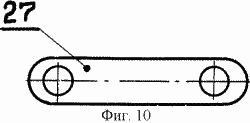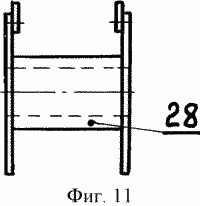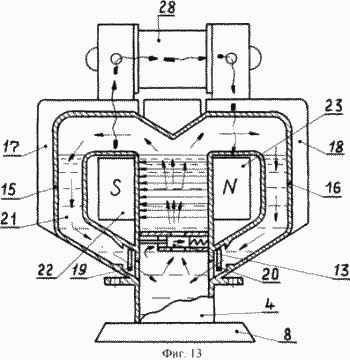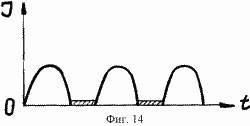| section Home
Production, Amateur Radio amateur Model aircraft, rocket- Useful, entertaining |
Stealth master
Electronics Physics Technologies invention |
space Mystery
Earth Mysteries Secrets of the Ocean Stealth section Map |
|
| Use of material is permitted for reference (for websites - hyperlinks) | |||
Navigation: => |
Home / Products Patents / In the section of the catalog / back / |
|
INVENTION
Russian Federation Patent RU2192090
![]()
Thermionic DC generator
Name of the inventor: Grigorchuk Vladimir Stepanovich
The name of the patentee: Grigorchuk Vladimir Stepanovich
Address for correspondence: 193036, St. Petersburg, C-36, st. 6th Sovetskaya, 25/20, kv.5, VS Grigorchuk
Starting date of the patent: 2001.02.28
The invention relates to electrical engineering, in particular to the design of DC generators. DC generator comprises a housing, a thermal energy converter to electrical terminals. What is new is that the heat energy into electric converter is made in the form of a heat pipe, which is a vertical cylinder made of nonmagnetic heat conductive metal. Above the cylinder has a wall with cooling fins, and the bottom is closed, is connected to the baseplate. The internal volume of the cylinder is divided into upper and lower cavities by a partition having a valve outlet opening into the upper cavity. The upper and lower cylinder chamber interconnected pipes having cooling fins, each of which is mounted an inlet valve opening into the lower cavity. The upper, lower and pipe cavity filled with a low-boiling liquid by the addition of iron oxide in finely divided form in the suspended state. Two permanent magnet, connected by a steel core on which the coil winding, cylinder cover their opposite poles. coil winding is connected in series with a diode and a capacitor, which terminals are connected to the generator terminals.
DESCRIPTION OF THE INVENTION
The invention relates to electrical engineering and can find application as a DC generator.
Known thermionic generator TGC-3, consisting of two thermopile with a large number of series-connected thermocouples cermet, teploperedatchika, exhaust pipes, cooling fins, 20 kerosene-lamp linear "Lightning". Kerosene consumption 60-70 g / h of generated currents and voltage: 2 V at a current of 2 A, at a current of 2 A 0.5, 1.2 retraction at a current of 0.36 A / ham Handbook, edited by AA . Kulikovskii, ed. 5, the State Energy Publishing House, Moscow, Leningrad, 1961, p. 318-319, Fig. 16.1 /.
The disadvantages of the known thermoelectric generator TGK-3 are the consumption of fossil fuels, the inability to work from other heat sources, low efficiency, pollution combustion.
These shortcomings are due to the fact that most of the energy spent on lighting, and a thermionic generator design.
Known and thermionic generator comprising an electrically insulating housing within which is placed in a thermal electric power converter configured in the form of a heated cathode, anode, cooled, placed in a gaseous environment. Efficiency - 15%, the power of 200 kW, the specific weight of 20 kg / kW. / Sea Encyclopedic Dictionary, ed. dts VV Dmitrieva, that is, 5, P-I, St. Petersburg, Shipbuilding, 1994, p. 213 /.
Known thermionic generator, as the closest the technical essence and achieved useful result, taken as a prototype.
The disadvantages of the known thermionic generator, taken as a prototype, is a large specific gravity, a large temperature difference between the anode and the cathode attached to one heat source.
These flaws are due to thermionic generator design.
The present invention is to increase the performance of thermoelectric generator.
This object of the invention is provided in that the converter of thermal energy into electricity replaced the heat pipe in the shape of a vertical cylinder made of nonmagnetic heat conductive metal having at the upper end wall of the cooling fins, and the bottom of the closed lid connected to the base plate, and the internal volume of the cylinder is divided into upper and lower cavities by a partition having an exhaust valve which opens into the upper chamber, the upper and lower cavities are interconnected pipes having cooling fins, inside each of which is mounted an intake reed valve, opens into the lower cavity, except of the top and bottom of the cylinder, and conduits are filled with low-boiling liquid with the addition of iron oxide in finely divided form in the suspended state, the two permanent magnets interconnected by a steel core and a covering on their opposite poles vertical cylinder coil with a winding, mounted on a steel core, a capacitor connected in series with the coil winding and the diode, the conclusions of which are electrically connected to the terminals.
BRIEF DESCRIPTION OF THE DRAWINGS FIG. 1 is a perspective view of the DC generator; FIG. 2 - view cboku on DC generator; FIG. 3 - a top view of the DC generator; FIG. 4 - front view of a constant current generator in section; FIG. 5 - a top view of the DC generator with covers removed, partially in section; FIG. 6 - the device of the heat pipe in section; FIG. 7 - top view of the heat pipe; FIG. 8 - a general view of the left permanent magnet; FIG. 9 - top view of the left permanent magnet; FIG. 10 - general view of the oval core; FIG. 11 - general view of the coil; FIG. 12 - electrical circuit DC generator; FIG. 13 - action DC generator principle; FIG. 14 - graph of the current flowing through the coil winding; FIG. 15 - current schedule, taken from the condenser by the consumer.
 |
 |
 |
 |
 |
 |
 |
 |
 |
 |
 |
 |
 | |
 |
 |
DC generator comprises a housing 1, closed at the top lids 2, 5, which is placed inside the converter of thermal energy into electrical energy, which is a heat pipe, formed into a cylindrical shape 4, made of nonmagnetic heat conductive metal and mounted vertically. Above the cylinder has an end wall with cooling fins 5 and the bottom 6 is closed, by which a locking ring 7 attached baseplate 8. The internal volume of the cylinder is divided by a partition 9, retaining rings 10 attached on the upper 12 and lower 11 cavities. The partition has an outlet valve 13 loaded by a spring 14, and the outlet openings. Exhaust valve opens at the upper cavity. The upper and lower cylinder chamber interconnected conduits 15, 16 having cooling fins 17, 18, which are installed inside the intake valves 19, 20 open into the lower cavity. Pipelines in the junctions with a heat insulating lining tube are not shown in the drawing. Cylinder pipes and 4/5 volume 21 filled with low-boiling liquid with addition of iron oxide in finely divided form, in suspension or other magnetic material. An exemplary low-boiling liquid composition: ether 65-70%, 10-15% glycerol, iron oxide or other magnetic material 20%. The grain size of iron powder and liquid components oxide powder should provide uniform distribution throughout the volume. The iron oxide should not precipitate. 22, the left and right permanent magnets 25 are identical in construction and differ from each other only in the direction of the magnetic induction. Each of the permanent magnets comprises apertures 24, 25 and spherical surface 26. The two permanent magnets are connected to each other through the iron core 27 and fixed to the housing. On the coil core 28 is put on which is wound coil 29. The permanent magnets are spherical surfaces and their opposite poles respectively cover the cylinder of the heat pipe. Inside the housing is set large capacity capacitor 30 connected in series with a winding coil and a capacitor 31. The diode connected to the terminals Conclusions 32, 33 mounted on one of the housing covers.
OPERATION DC generator
For electric power DC generator is necessary to put its base plate 8 on any flat surface, which is a heat source. During heating, the support plate 8 will transfer heat to the cylinder 4 of the heat pipe. Located at the bottom of the cavity 12, 21 low-boiling liquid will boil, vaporize and expand, creating increased pressure. The intake valves 19, 20 closed. As soon as the pressure force exceeds the force of the spring 14 acts to open the exhaust valve 13 and the low-boiling liquid with iron oxide 21 is discharged through the outlet openings up to the upper blade 11, crossing the lines of magnetic force of the permanent magnets 22, 23 (13). This changes the magnetic tray, crossing the windings 29 and in it there is an electric current. When the exhaust valve 13 is closed the magnetic flux 22 of the left and right permanent magnets 23 is not changed, and the current in the winding 29 of the coil 28 is not flowing. FIG. 14 that flows through winding 29 of the coil 28 is pulsed current, its magnitude is first increases up to a certain limit, then decreases to zero. Upon reaching the top of the upper cavity 11, low-boiling liquid is cooled gives up heat to cooling fins 5, 17, 18, condenses and flows through pipes 15, 16 into the lower cavity 12 of the cylinder 4 by opening the inlet valves 19, 20, due to the fact that the bottom of the cavity 11 It generates negative at the time of release of low-boiling liquid. Then everything is repeated again. Thus, periodically overpressure is created in the lower cavity 11 opens the exhaust valve 13 is discharged low-boiling liquid in the upper chamber 12, opening the intake valves 19, 20, letting the lower cavity of spent cooled low-boiling liquid, and in the winding 29, coil 28 periodically has pulses electric current. The time between current pulses (FIG. 14, the shaded portions), the repetition frequency of these pulses depends on the heating temperature of the base plate 8, the boiling temperature low-boiling liquid and the force of the spring 14 of the exhaust valve 13. The pulsing current generated in the coil 29 flows through the diode 31 on the capacitor 30 gradually charges it, bringing it to a difference potential to the plates of a certain size. At times when the current in the winding 29 does not occur (shaded areas in Figure 14) disables its diode 31 from the capacitor 30, preventing the last digit. The current taken from the condenser is constant in magnitude and direction, as shown in FIG. 15.
DC generator can be used in expeditions, hiking, and in other cases where the electricity is needed, and there are any sources of heat (about the heat pipe, see. Physical Encyclopedic Dictionary, Ch. Ed. A.M. Prokhorov, Moscow, Soviet encyclopedia, 1985, p. 745).
Positive effect: it can operate at a small temperature difference, the use of any source of heat, light weight, high mobility.
CLAIM
DC generator comprising a housing, a thermal energy converter to electrical terminals, characterized in that the converter of thermal energy into electrical energy is in the form of a heat pipe, which is a vertical cylinder made of nonmagnetic heat conductive metal, having on the upper end wall of the cooling fins, and the bottom of the closed lid connected to the base plate, the inner volume of the cylinder is divided into upper and lower cavities by a partition having an exhaust valve which opens into the upper chamber, the upper and lower cylinder chamber interconnected pipes having cooling fins within each of which is mounted an inlet valve opening into the lower cavity to the same upper, lower cavity and conduits are filled with low-boiling liquid with the addition of iron oxide in finely divided form in a liquid in suspension, in addition, two permanent magnets interconnected by a steel core cover cylinder in the middle of their opposite poles, and a coil fixed to the iron core, which winding is connected in series with a diode and a capacitor, which terminals are connected to terminals.
print version
Publication date 15.11.2006gg




Comments
Commenting, keep in mind that the content and the tone of your messages can hurt the feelings of real people, show respect and tolerance to his interlocutors, even if you do not share their opinion, your behavior in terms of freedom of speech and anonymity offered by the Internet, is changing not only virtual, but real world. All comments are hidden from the index, spam control.